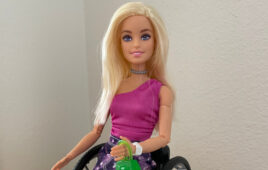A new study published in the Annals of Physical and Rehabilitation Medicine described the gait characteristics of toddlers with unilateral cerebral palsy (UCP) who had recently learned to walk.
The research, carried out by researchers in France and Romania, compared the gait characteristics of 28 typically developing toddlers and 13 toddlers with UCP. All of the children were new walkers, with no more than 6 months of walking experience, and the children were up to 3 years old.
Researchers found “bilateral modifications of the spatiotemporal parameters” and “temporal asymmetry” in the children with UCP. The kids with UCP also had pelvic rotation on the affected side, and “the foot progression angle was external during swing phase on the affected side.”
Researchers concluded, “At that age, the external pelvic rotation on the affected side is more likely due to primary motor control disorders than compensatory mechanisms.”
The takeaway, they added, was that early rehabilitation for these children “should focus on proximal motor control, balance and symmetry to optimize gait development from the early stages in children with UCP. Alterations in kinematic gait parameters were mostly found at the pelvis in toddlers with UCP and newly acquired gait.”
The study was published in November 2019.

